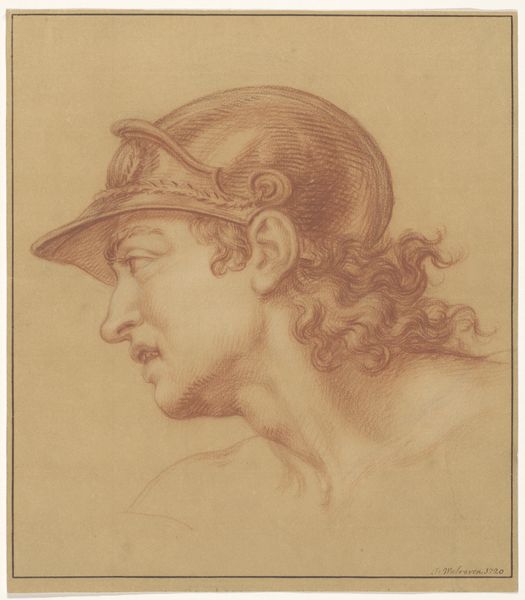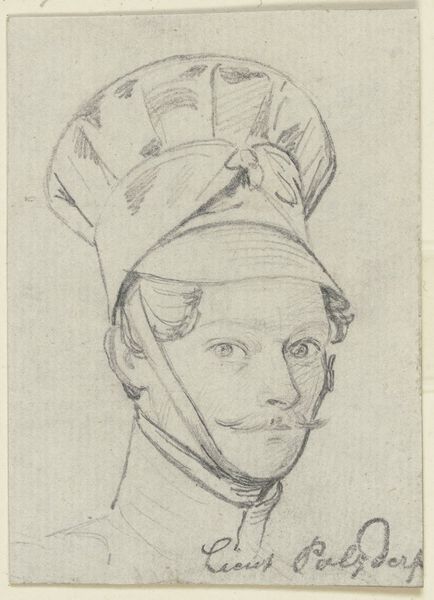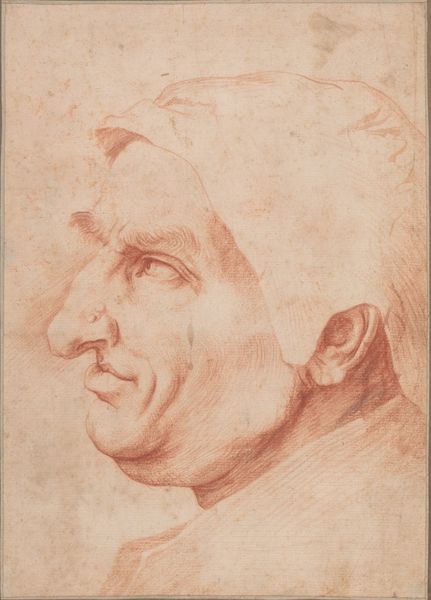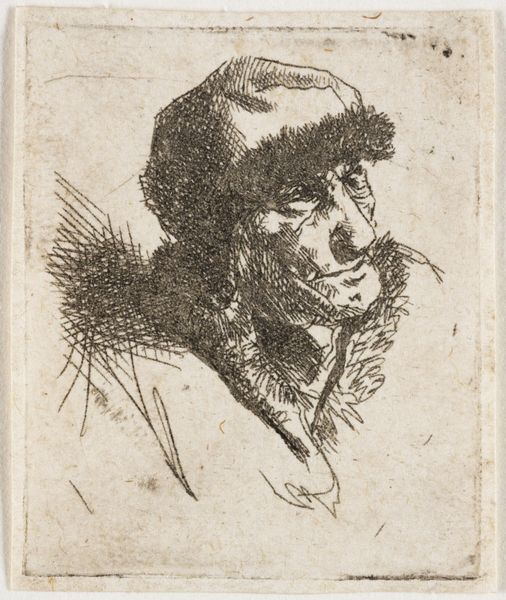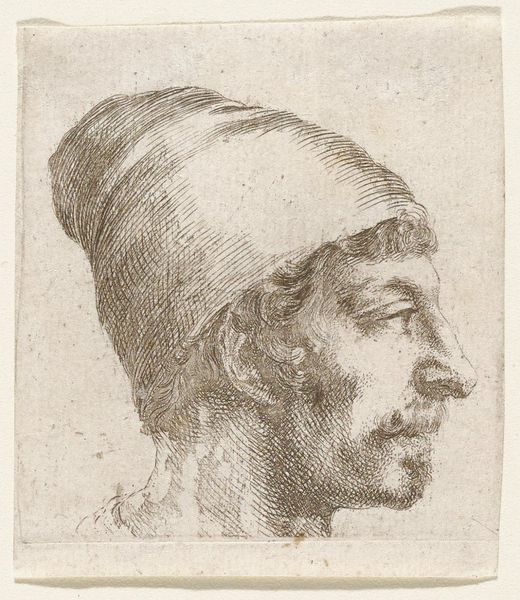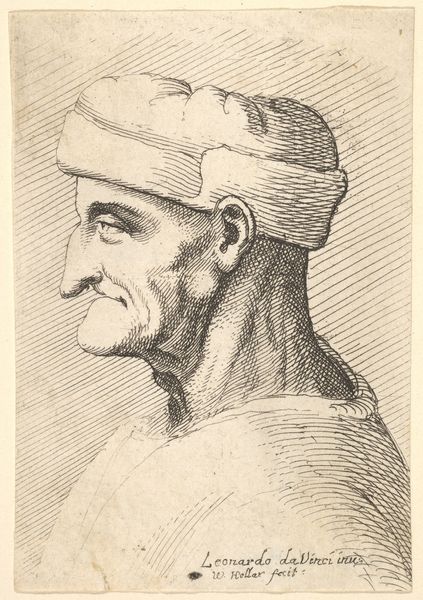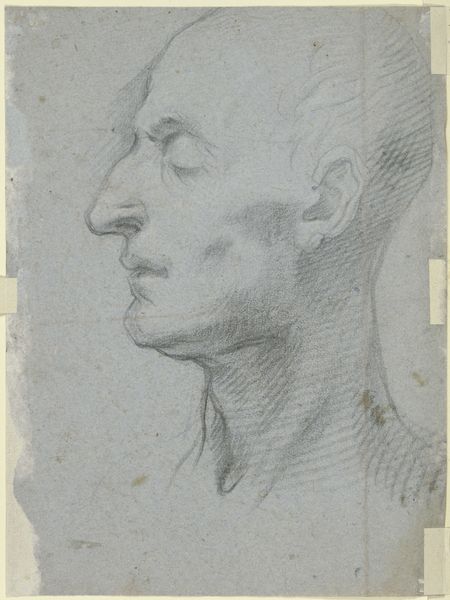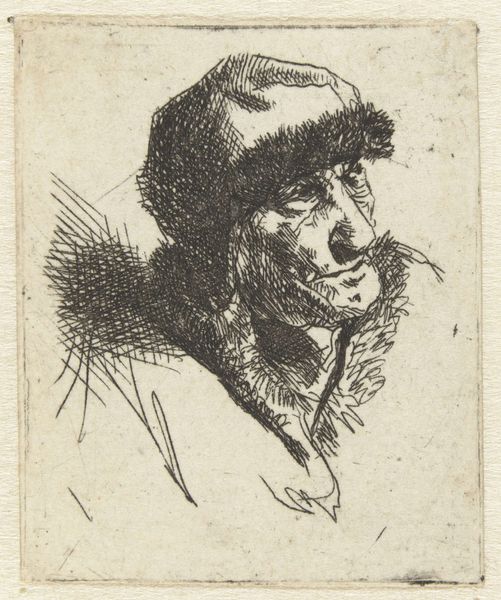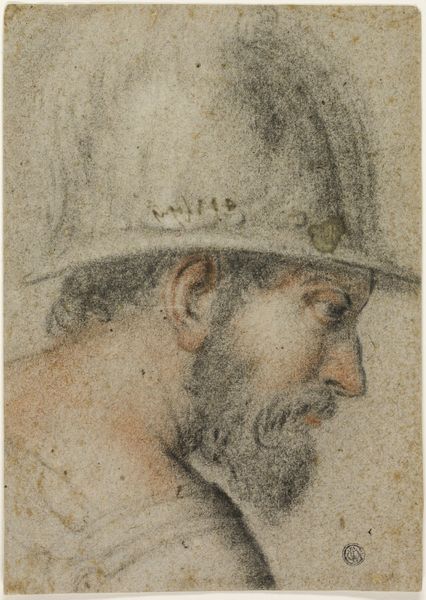
drawing, pencil
#
portrait
#
drawing
#
facial expression drawing
#
pencil sketch
#
11_renaissance
#
portrait reference
#
pencil drawing
#
pencil
#
animal drawing portrait
#
portrait drawing
#
facial study
#
facial portrait
#
academic-art
#
portrait art
#
fine art portrait
Dimensions: height 314 mm, width 248 mm
Copyright: Rijks Museum: Open Domain
Isaac Walraven created this red chalk drawing of a helmeted head in the Netherlands sometime in the first half of the 18th century. Walraven likely intended the drawing as a preparatory study for a history painting; the helmet suggests a classical subject drawn from antiquity. Such works reveal the institutional structures that shaped artistic production at the time. Artists often trained at academies, where they would learn to draw from life and from plaster casts of classical sculptures. They would also study the works of Old Masters, such as Raphael and Michelangelo, whose works were seen as the epitome of artistic achievement. Walraven’s drawing reflects these academic conventions. By studying the drawing, we can learn a great deal about the artist's training, the artistic conventions of the time, and the social and cultural values that shaped artistic production. These kinds of social and institutional contexts are crucial to understanding the public role of art in the 18th century.
Comments
No comments
Be the first to comment and join the conversation on the ultimate creative platform.

